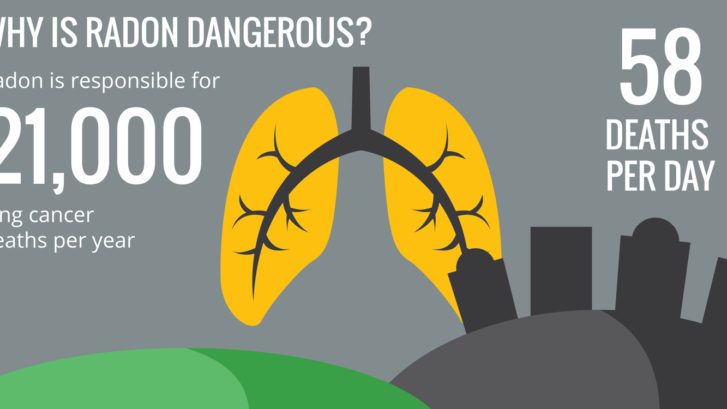What You Need To Know About Radon
Because the U.S. Environmental Protection Agency (EPA) has designated January as National Radon Action Month (NRAM), our concierge doctors in Jupiter, want to bring you up to date on this dangerous carcinogen, and let you know what you can do to mitigate its effects in your home.
Radon was originally thought to affect only miners, and to be present mainly in mountainous areas with high concentrations of granite and shale. Therefore, you may have thought that those of us living in Florida had little to worry about when it comes to radon contamination. But according to the Florida Department of Health (FDH), one in five homes in our state has tested for elevated radon levels above the action level (four picoCuries per liter: pCi/L). And since radon exposure is second only to cigarette smoking as a cause of lung cancer—representing more than 21,000 lung cancer deaths annually—it’s a danger you can’t afford to ignore.
Learning about radon’s dangers
Radon is a radioactive gas that forms naturally when the radioactive metals uranium, thorium, or radium break down naturally in rocks, soil, and groundwater. It is present in all soil types and in nearly all rocks in all 50 states, as well as worldwide, and humans are always being exposed to it, simply by living on the planet. The gas is odorless, colorless, and tasteless, and because it’s a gas, it is easily inhaled.
While radon was known to be present in indoor air as early as the 1950s, it wasn’t recognized as the danger it is until 1985. A worker at a nuclear power plant in Pennsylvania was found to be contaminated with radiation, triggering an alarm at the plant. Eventually, the source of the worker’s contamination was traced to high levels of radon in his home, and scientists began to realize that buildings could be a source of contamination.
While radon gas dissipates fairly quickly in the outdoor air, it tends to become concentrated within closed buildings. It can enter through cracks in the walls or foundation, gaps around pipes or construction joints, or within the walls of the home because air pressure inside homes is usually lower than the pressure in the soil, creating a vacuum effect. The amount of radon that soil can produce depends on local geology and varies from house to house depending on what type of soil the house is situated on, the suction created within the house, even the weather. According to the FDH, the number of homes in Florida reporting elevated radon varies from a high of 70 percent to a low of 1 percent and has been reported in all areas of the state.
Effect on health
The EPA and the Surgeon General’s office warn that when radon and its decay products are inhaled into your lungs, they emit energetic particles known as alpha particles. When these particles come in contact with the sensitive lining of your lungs, the cells and their DNA are damaged, increasing the risk of developing lung cancer. Smoking increases these effects because cigarettes also damage the DNA in the lungs. As with smoking, it can take many years before problems appear.
In Florida, because of the high levels of concrete and stone used to guard against hurricane damage, Floridians have reported high levels of radon through all floors of high-rise, multi-family buildings. (Concrete and stone emit radon like any other type of rock.) And because these types of homes frequently tend to be sealed off from access to fresh air, the gas becomes even more concentrated inside. The contamination can occur in any type of home, however.
How to protect yourself
Because radon contamination can exist anywhere in any home, you need to take steps to protect yourself and your family from this deadly gas. The Centers for Disease Control and Prevention (CDC) recommends the following steps:
- Obtain a radon test kit. They are free from the FHD at (http://www.floridahealth.gov/environmental-health/radon/_documents/florida-radon-testkit-coupon.pdf) or by calling 850-245-4288 or 800-543-8279.
- Test your home or office. It is simple and should take only a few minutes of your time.
- Stop smoking and discourage smoking in your home.
- Increase airflow in your house by opening windows and using fans and vents to circulate air.
- If the radon test reveals high levels of radon, you can hire mitigation professionals to seal cracks in floors and walls with plaster, caulk, or other materials designed for this purpose. The FHD’s website has a list of Florida contractors who are certified to provide mitigation services.
Before you buy a new home, ask about radon-resistant constructions techniques, and have the home tested for radon before purchase.
And as always, if you have any questions about this or other health topics, don’t hesitate to contact us.

